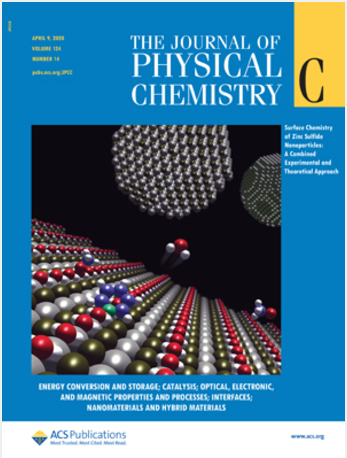原子薄过渡金属二钙化层弹性模量的实验分析
IF 3.3
3区 化学
Q2 CHEMISTRY, PHYSICAL
引用次数: 0
摘要
纳米压痕法用于测量四种二维过渡金属二掺杂物(TMDs)的纳米力学性能,即二硫化钼(MoS2)、二硫化铼(ReS2)、二硒化铼(ReSe2)和二硒化钨(WSe2),它们具有与石墨烯相当的极高拉伸强度。这些材料具有应用于新型电子设备的潜力,但它们的纳米力学性能尚未得到很好的研究。为此,我们使用原子力显微镜(AFM)通过纳米压痕测量这些二维纳米材料的弹性模量,生成力-距离曲线进行分析。在这项工作中,我们开发了一种新的 Python 代码来分析这些力距曲线,与 AtomicJ 和 MountainsSPIP 等现有数据分析软件相比,能更准确地得出这些纳米材料的还原杨氏模量和刚度值。使用我们的代码得出的 MoS2、ReS2、ReSe2 和 WSe2 的还原杨氏模量值分别为 140、79、37 和 38 GPa,差异百分比见表 3。在这些样品中,MoS2 的还原杨氏模量和刚度值最高,其次依次是 ReS2、WSe2 和 ReSe2。与其他两款数据分析软件相比,我们的结果与文献中的理论计算结果更为吻合。本文章由计算机程序翻译,如有差异,请以英文原文为准。

Experimental Analysis of the Elastic Moduli of Atomically Thin Transition Metal Dichalcogenides
Nanoindentation was used to measure the nanomechanical properties of four two-dimensional transition metal dichalcogenides (TMDs), namely molybdenum disulfide (MoS2), rhenium disulfide (ReS2), rhenium diselenide (ReSe2), and tungsten diselenide (WSe2), with very high tensile strengths comparable to graphene. These materials have potential applications for new electronic device applications, but their nanomechanical properties have not yet been well studied. For this purpose, an atomic force microscope (AFM) capable of measuring the elastic moduli of these two-dimensional nanomaterials through nanoindentation was used to generate force–distance curves for analysis. In this work, we developed a new Python code to analyze these force–distance curves, resulting in more accurate values of the reduced Young’s modulus and stiffness of each of these nanomaterials as compared to existing data analysis software such as AtomicJ and MountainsSPIP. The values obtained using our code for reduced Young’s modulus of MoS2, ReS2, ReSe2, and WSe2 were 140, 79, 37, and 38 GPa, respectively, with percent differences as summarized in Table 3. Among the samples, MoS2 has the highest values for its reduced Young’s modulus and stiffness followed by, in order, ReS2, WSe2, and ReSe2. Our results were in better agreement with theoretical calculations in the literature than those obtained by the other two pieces of data analysis software.
求助全文
通过发布文献求助,成功后即可免费获取论文全文。
去求助
来源期刊

The Journal of Physical Chemistry C
化学-材料科学:综合
CiteScore
6.50
自引率
8.10%
发文量
2047
审稿时长
1.8 months
期刊介绍:
The Journal of Physical Chemistry A/B/C is devoted to reporting new and original experimental and theoretical basic research of interest to physical chemists, biophysical chemists, and chemical physicists.
 求助内容:
求助内容: 应助结果提醒方式:
应助结果提醒方式:


